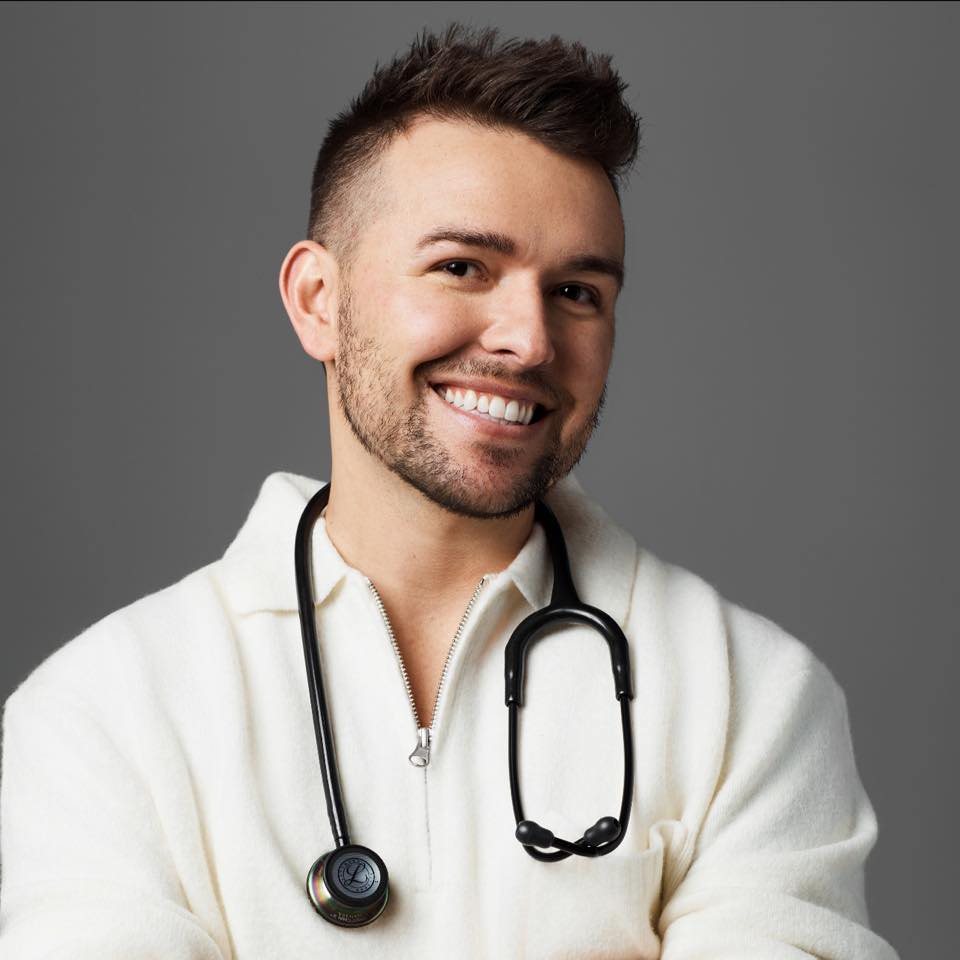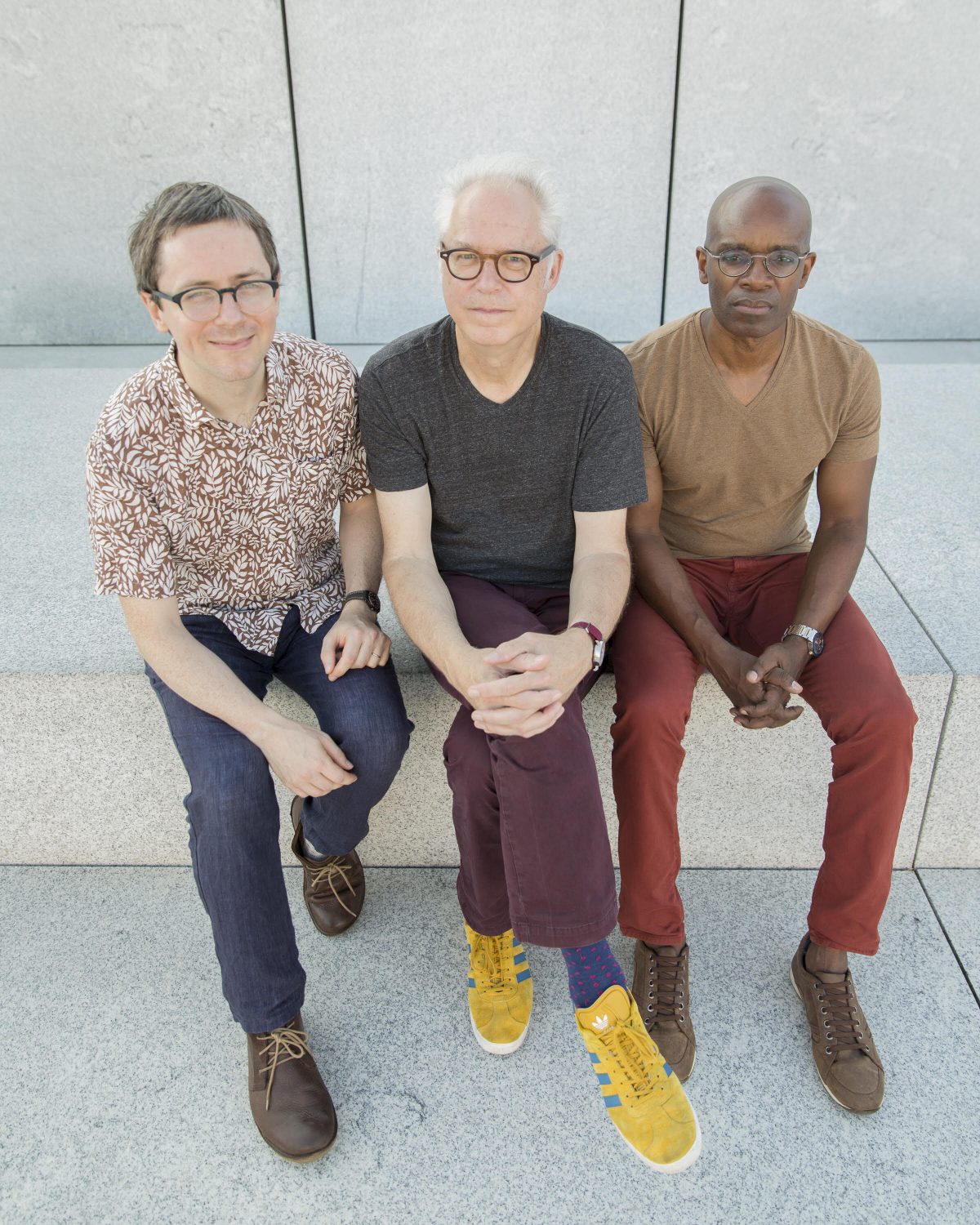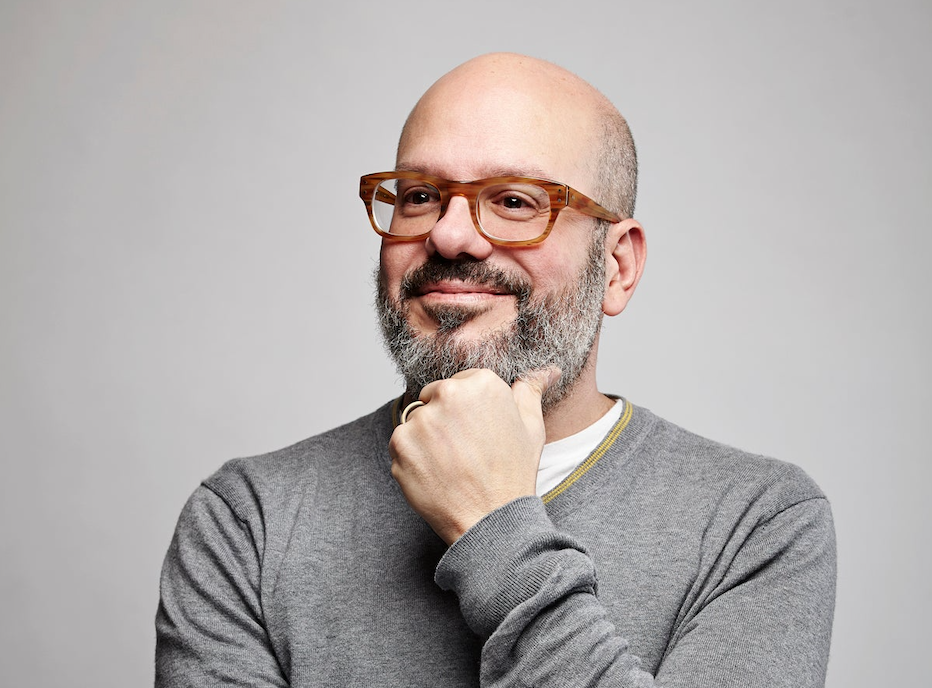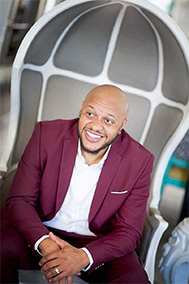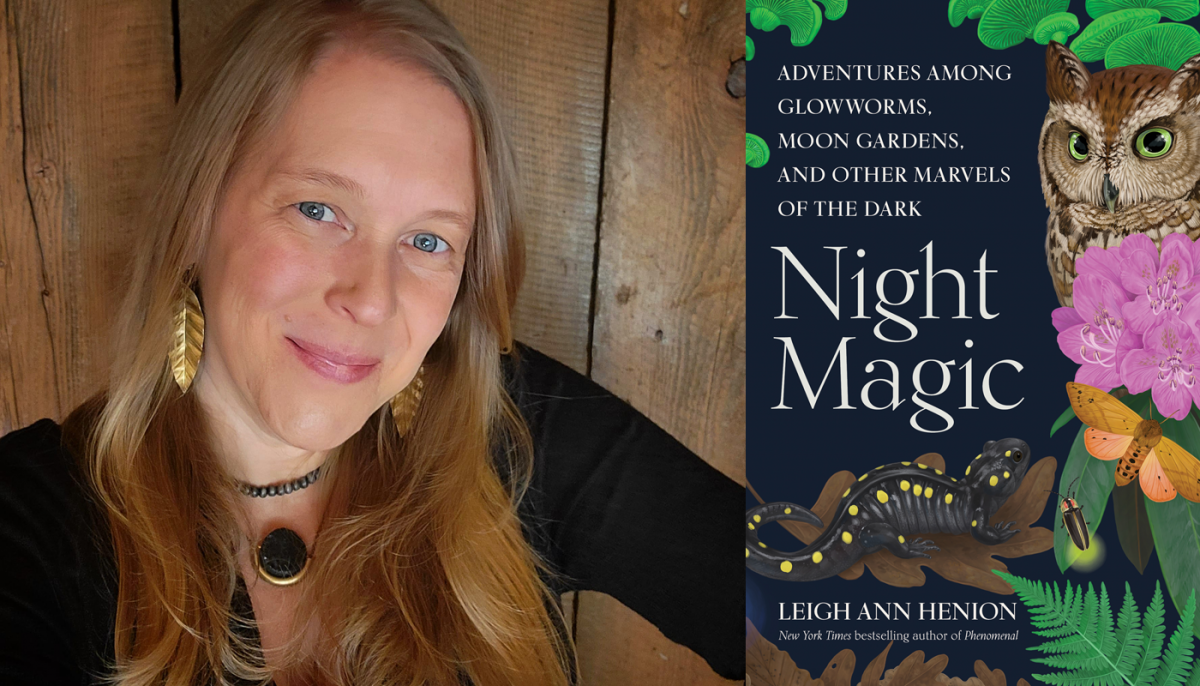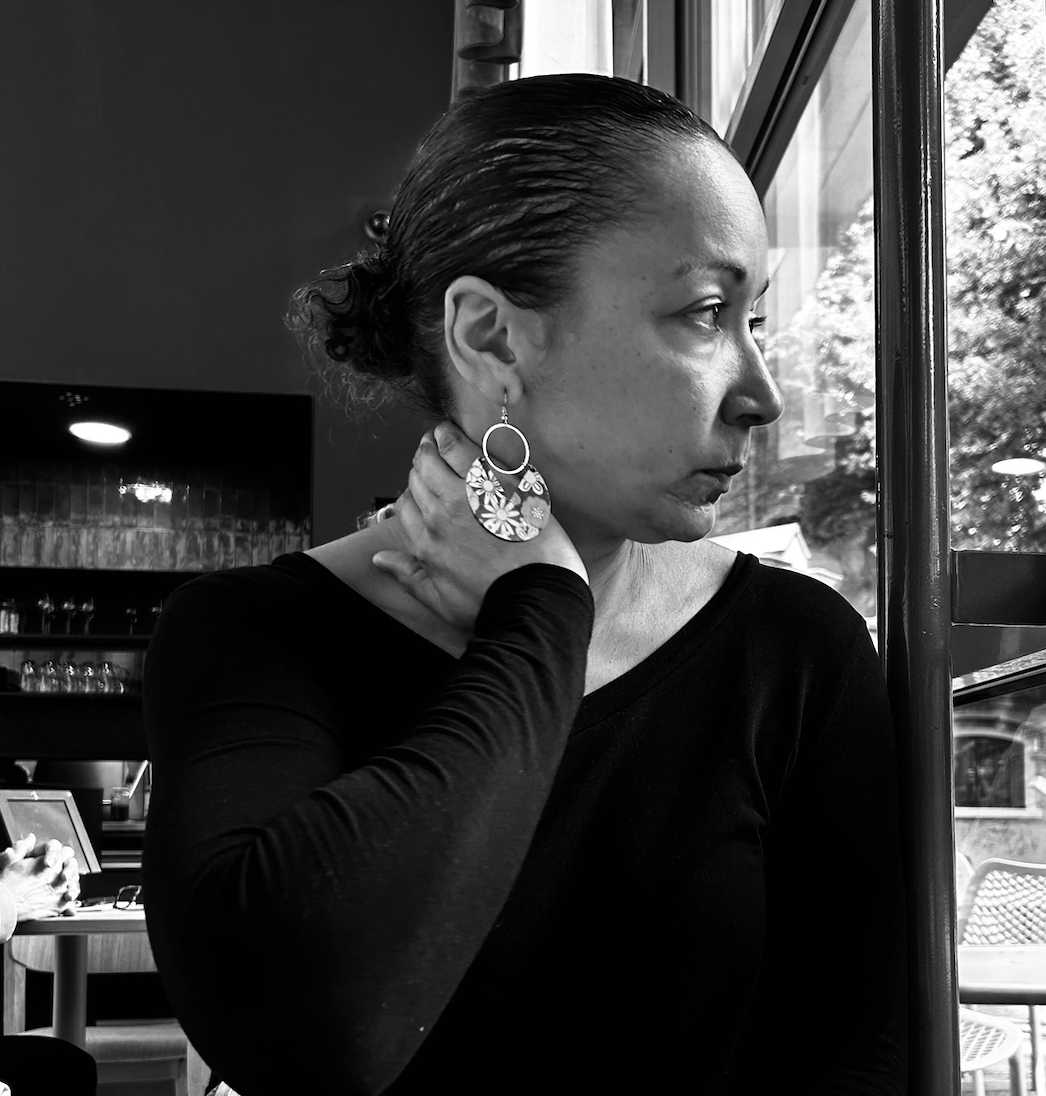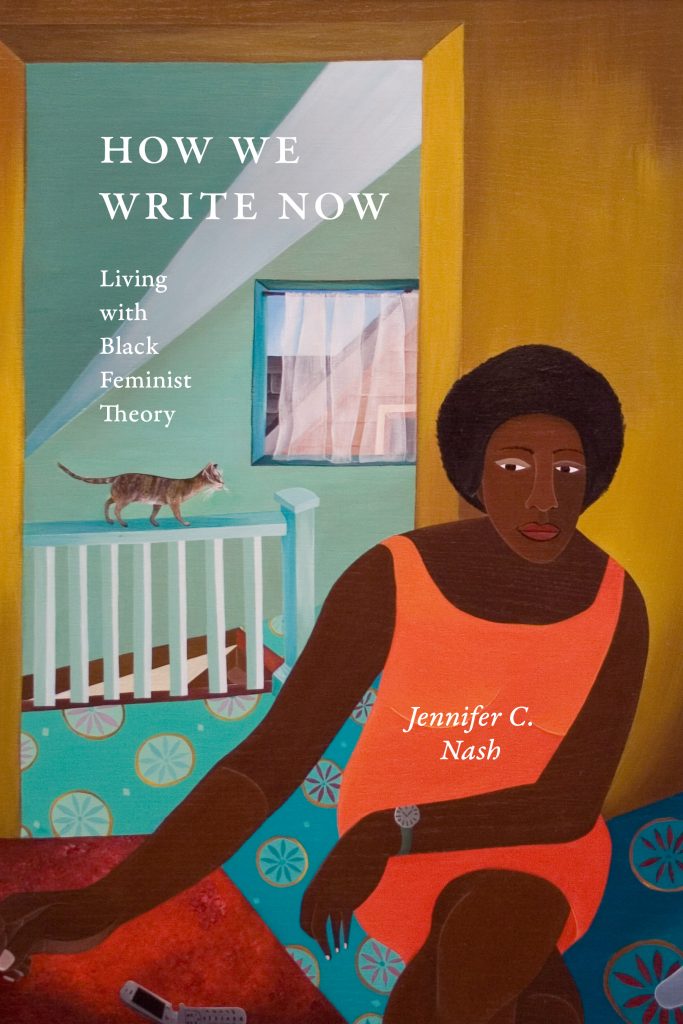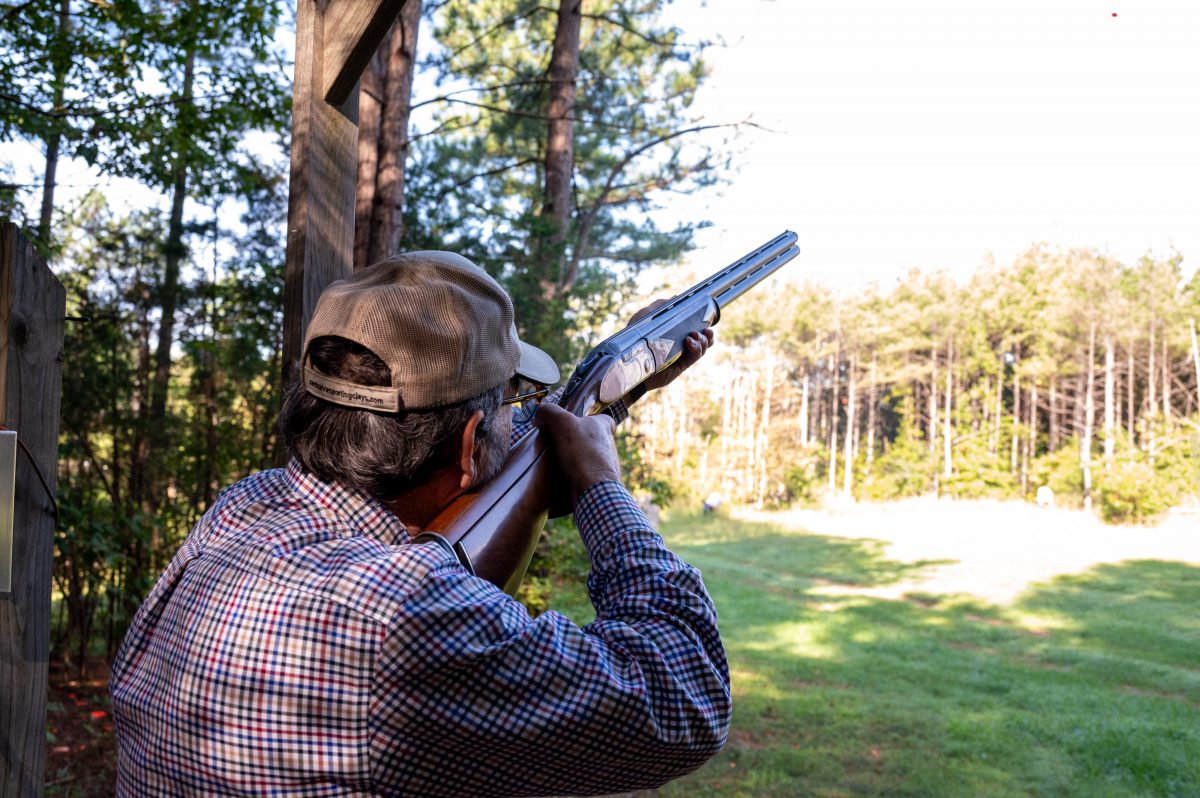By BJ Poss, Sarah Golibart Gorman, and Ella Powell
The simple recipe of ingredients and technique
Behind an ever-changing food scene, local cooks, mixologists, and makers are working every day to bring out the best in their fields of expertise, and teach a deeper appreciation of what grows in the backyard. From olive oil and pasta to mezcal, world cuisine, and kitchen skills, the passionate culinarians in these pages are just a few reasons why Charlottesville is a delicious place to live.
“The first step in learning to cook is building confidence in the kitchen. It’s about fostering a mindset where you’re not afraid to experiment, try new things, and even make mistakes. Cooking is an iterative process, and every “failed” dish is a learning opportunity.”
Chef Antwon Brinson, Culinary Concepts AB LLC
C-ville Bites
Pasta, gelato, and more with Chef Kelvino Barrera
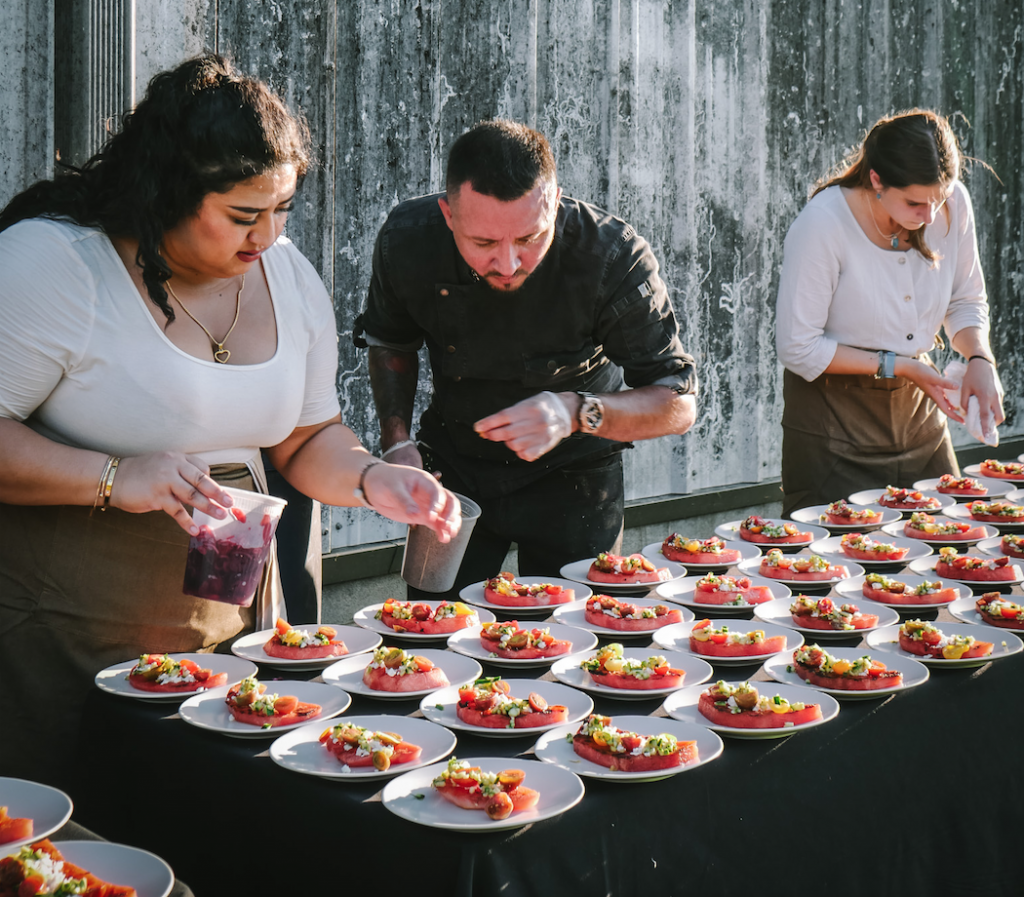
“I don’t think I can imagine the number,” laughs C-ville Bites Chef Kelvino Barrera when asked to calculate how many tortellini he’s hand-rolled. Barrera, who mastered pasta rolling during his time at Pippin Hill Farm, will, along with C-ville Bites owner MJ Padilla, turn your home kitchen into a fine Italian cucina. You choose your pasta style, sauce, protein, and accompaniments, and they’ll teach you the ins and outs of pasta-making.
“One of the most interesting requests I’ve had is raviolo al’ uovo,” says Barrera, “It’s challenging to get the ravioli with the runny egg yolk just right. But when you see people get it, and their eyes light up, that’s the priceless part of the experience.”
These classes allow Barrera and Padilla to take little bits and pieces of influence, much like they do in their home kitchens, and provide “an experience not just for the guests but also for us,” Barrera says. “It’s more intimate; everybody feels comfortable coming and talking to you while you cook or asking questions.”
Barrera and Padilla both spent their early years in Honduras, with Barrera moving to Charlottesville at age 13. He got his first kitchen job as a line cook, where he fibbed his way into a meat counter job and learned how to trim steaks on the fly. He’s since run the kitchen at The Shebeen, had stints at The Bebedero and South and Central, worked a food truck, and is now running pasta, gelato, and sauce-making classes at C-ville Bites.
“I always like to put a little bit of my mom’s touch in recipes,” says Barrea, reflecting on growing up assisting his mother and grandmother in the kitchen. “It makes me feel like I’m home in my cooking.”
Along with C-ville Bites’ cooking classes, consider Padilla’s Friday and Saturday food tours, where you’ll stroll the Downtown Mall and sample some of her favorite local fare, and then enjoy a meal that is Charlottesville dining through and through.
“Don’t be afraid to burn that pot of quinoa or overcook the chicken breast. Sit down, enjoy your creation for what it is, notice what went wrong, what flavors you like, what it needs more of, and try again next week. Cooking is all about repetition, failing miserably, and just simply trying again!”
Chef Travis Burgess, Bizou /Bang /Luce Pasta
Women in olive oil
Olive Oil tasting lesson from sommelier Jill Myers
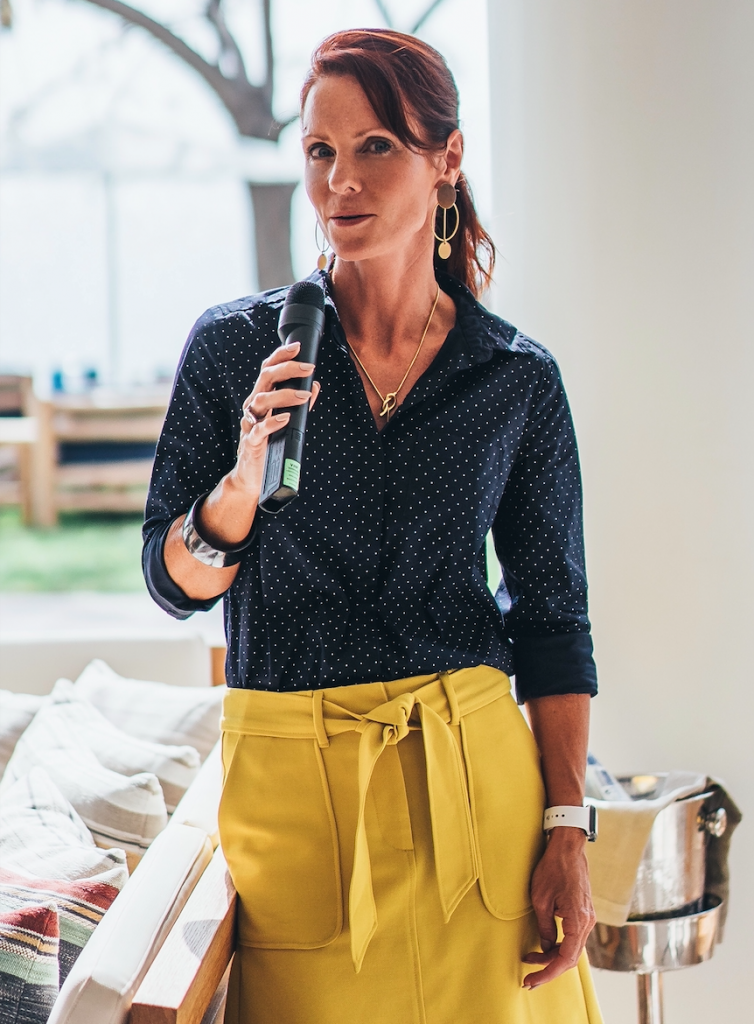
One of the greatest gifts a home chef or any admirer of quality cuisine can learn in the kitchen is that if each dish is to be enjoyed as its own entity, its contents should be considered with the same grace. Alongside the culinary staples crowding your cupboard–the flaky salt, five-pepper grinder behind a glass ramekin of dried oregano—is the sometimes overlooked foundation of many meals: olive oil.
The enviable life goal of Jill Myers, certified as an olive oil sommelier by New York’s International Culinary Center, is to increase accessibility and appreciation for the breadth of crushed and fine goodness that comes from the fruits of a Tuscan olive tree. “It’s a beautiful product,” she says. “Liquid gold.”
Myers offers tasting lessons on the history of olive oils from around the world. Her classes teach the influence of terroir and mindful pressing, and are typically held at wineries throughout the Monticello AVA, in conjunction with a wine pairing. “It’s always through wine that people love olive oil,” she says.
Olive oil and wine parallel in their growing season, in their elegant complement to the culinary experience, and in that the best production is likely resting in a glass jug tucked somewhere in an Italian countryside farmhouse. “I love the culture behind slower food processes,” says Myers as she spills out a golden shade of a Tuscan leccino from her recent Italian harvest.
Myers guides you through the nooks and crannies of the Mediterranean as she recounts conversations held at a sturdy table after a long day’s harvest. “Quality olive oil should taste like a summer garden,” she says. The care and attention it takes to cultivate worthwhile oils calls for their consumption to be paired as you would a thoughtful wine list. As Thomas Jefferson said, “The olive is surely the richest gift of heaven.”
“Learning to cook for me truly began when I delved into the history of French cuisine, which sparked an appreciation for the art of cooking, especially in a professional setting. That passion led me to connect with other chefs and ultimately to the Culinary Institute of America, where my journey took shape with foundational courses like Product Knowledge and Skills 1—covering everything from knife cuts to stocks. The skills and insights I gained during those early days have become a part of my daily life, both inside and outside the kitchen.”
Chef de Cuisine Aaron Bellizzi, Marigold by Jean-Georges
the Bebedero / mejicali
Mezcal lessons with mixologist River Hawkins
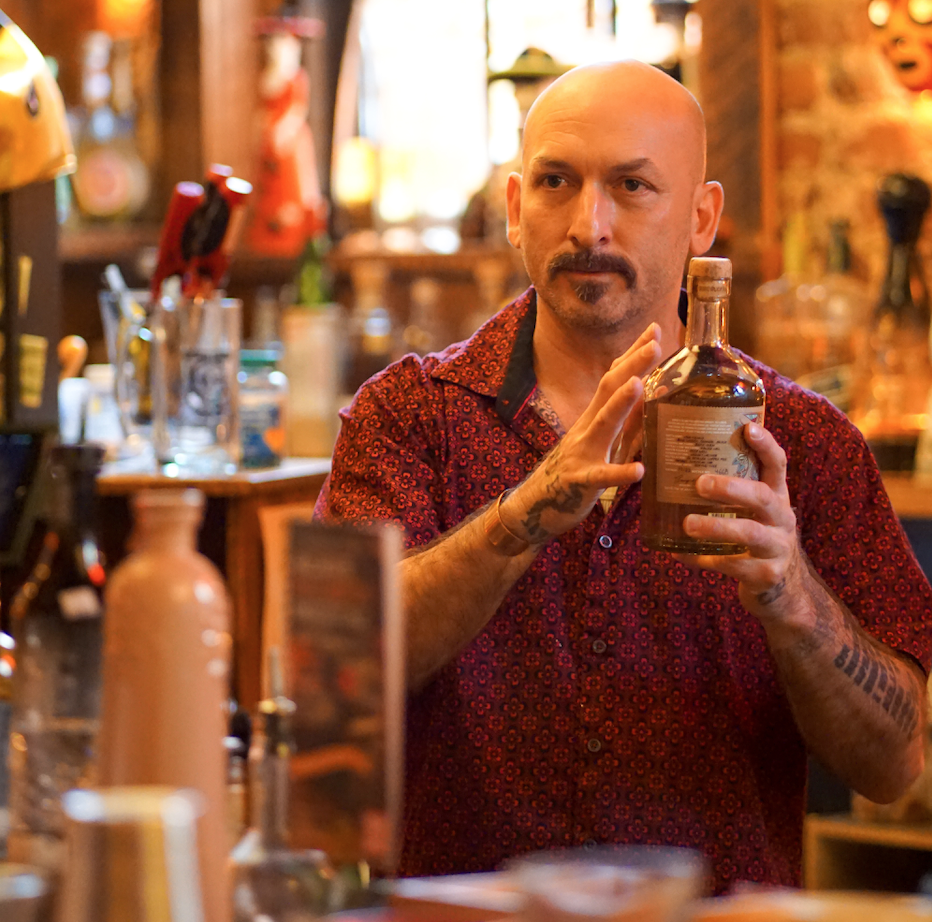
River Hawkins has made a life of conjuring, experimenting, and articulating agave delicacy. Hawkins, a mixologist and partner in The Bebedero on the Downtown Mall and Mejicali on West Main Street, offers two-hour classes for both mezcal and tequila. At your station, stocked with lime, salt, and a rarely empty 1.5 oz. glass, you’ll learn the intricacies of these spirits, their traditions, and why Hawkins pours two parts lime, one tequila, one sugar, and salts the rim. “The lime and salt excite the palate and enhance flavor,” he says. “Spirit, citrus, sugar, salt—the margarita is the quintessential cocktail.”
For every tequila drinker who shivers at the leer of the soaked worm watching from the bottom of the bottle, there is an equivalent in mezcalero that should be tried: the one buried in goat dung. The five regions of Jalisco, Mexico, produce agave that draws comparison to what Champagne is for sparkling wine.
Nuances of flavor are drawn from different appellations, aging styles, mixtos, and production within the five regions, but according to Hawkins, mezcaleros are in agreement: The blanco stage is the perfect stage; this is what tequila is supposed to taste like. Blanco is the unadulterated stage of tequila. Farmers appreciate its simplicity in retaining the essence of the purveyor’s terroir.
Hawkins’ classes teach you how to navigate the liquor store aisles and select the spirit to fit your evening. For a spirit to be considered tequila, it must be 51 percent blue agave and hail from Jalisco, Mexico. The other 49 percent is where you’ll run into over-sugared mixtos that lead to the hangover, swearing you off it. “You can find good things in any mezcal,” Hawkins says, but in selecting tequila, there is a creed that he emphatically implores: 100 percent blue agave.
Hawkins’ classes run year-round through the Bebedero, where you’ll make your own cocktail and taste test an array of spirits (snack breaks for housemade guac and elote are included). Go beyond the shot and keep an eye out for the next class and some blue agave.
“In the beginning, knowing how to measure dry or liquid ounces for savory recipes and understanding how many ounces are in a cup (8 oz.) is so key. Especially when it comes to baking, working in grams and using a digital scale will allow you to have much more control and understanding of ingredients and how they work in recipes. Baking is a science, and it really helps when your measurements are exact.”
Christina Martin, Head baker and owner of bakernobakery LLC
The Happy Cook
Tastes from around the world by chef Soledad Liendo
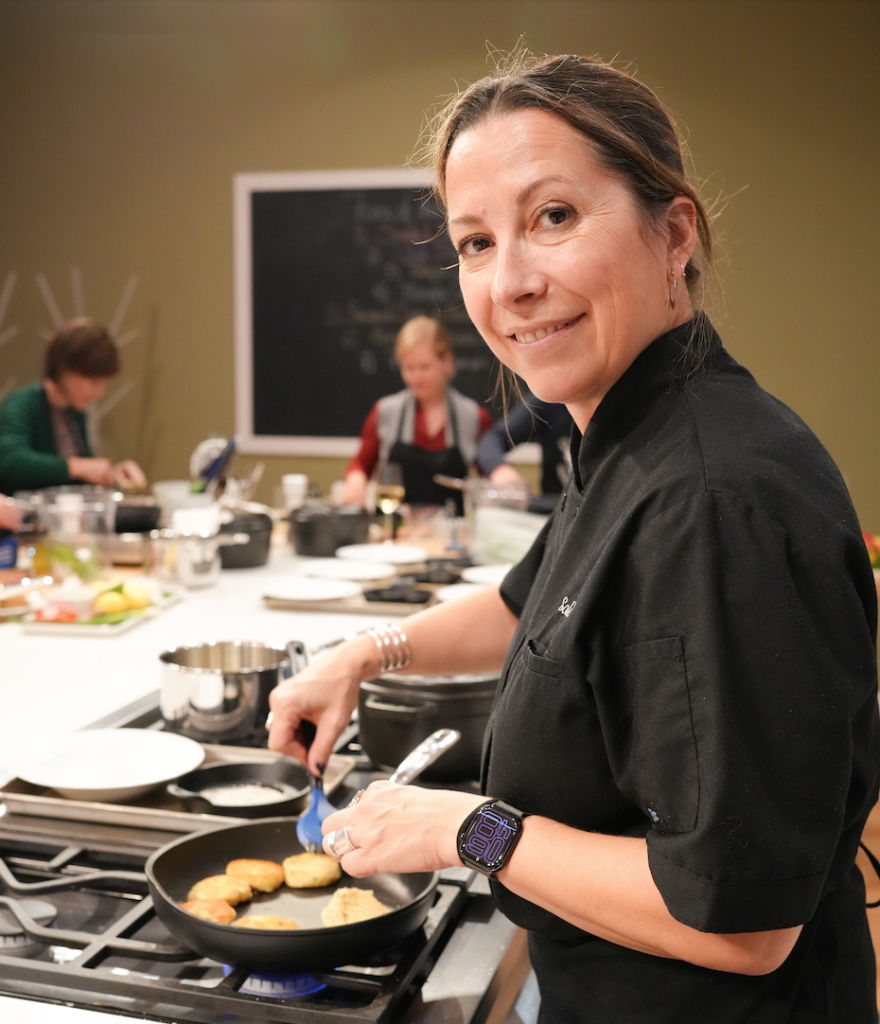
In a shop at Barracks Road Shopping Center there’s a narrow doorway that leads to an array of handcrafted cookware and your place among some of the world’s most notable cuisines. The back of The Happy Cook is where Soledad Liendo shares her culinary journey from her Buenos Aires home to the mastery of global cuisine.
Tickets are sold by the station, each of which accommodates two students. There’s an array of classes to choose from. Perhaps you want to perfect your knife skills or master the cuisine of Argentina. Or maybe just sign up for a seasonal course, one of which is a play on “The Bear”’s seven fishes episode. The two-hour classes lean on technique to master specific dishes amongst a full-course meal and local wine.
Liendo says her culinary journey doesn’t end when the burners cool. “Cooking, for me, is not locked in the kitchen. It’s about cooking, getting together, and enjoying a meal.”
For plenty of chefs, the pursuit of a family-worthy meal comes from the warm memories of their youth. “Gathering was the number one priority,” says Liendo. She recalls thumbing through a family cookbook put together to preserve the aromas and conversations over generations. She calls on this well of flavors to guide her popular Argentinian empanadas and alfajores classes. Liendo also navigates students through comforts from shepherd’s pie to decadent truffle pasta.
Courses at The Happy Cook, as noticed by Forbes, make for a cozy night out or gift idea. In addition, Liendo offers private lessons for small groups that are looking to hone in on a particular cuisine, and her training in French, Spanish, and Italian provides access to unique flavors of the world.
“I teach a variety of very active cooking classes here … and the first step to learning how to cook is ensuring that [students] are reading the recipes before they begin. Getting their mise en place ready before they start cooking is another crucial step. But the most important thing is to have fun with cooking. I always encourage [everyone] to play with recipes once they are comfortable. Exchanging herbs for different ones or playing with different chilis as long as they are cooking savory recipes, if they are baking they have to stick to the original recipe.”
Executive Chef Victoria Cosner, Pippin Hill Farm & Vineyard
PVCC
Technical kitchen skills
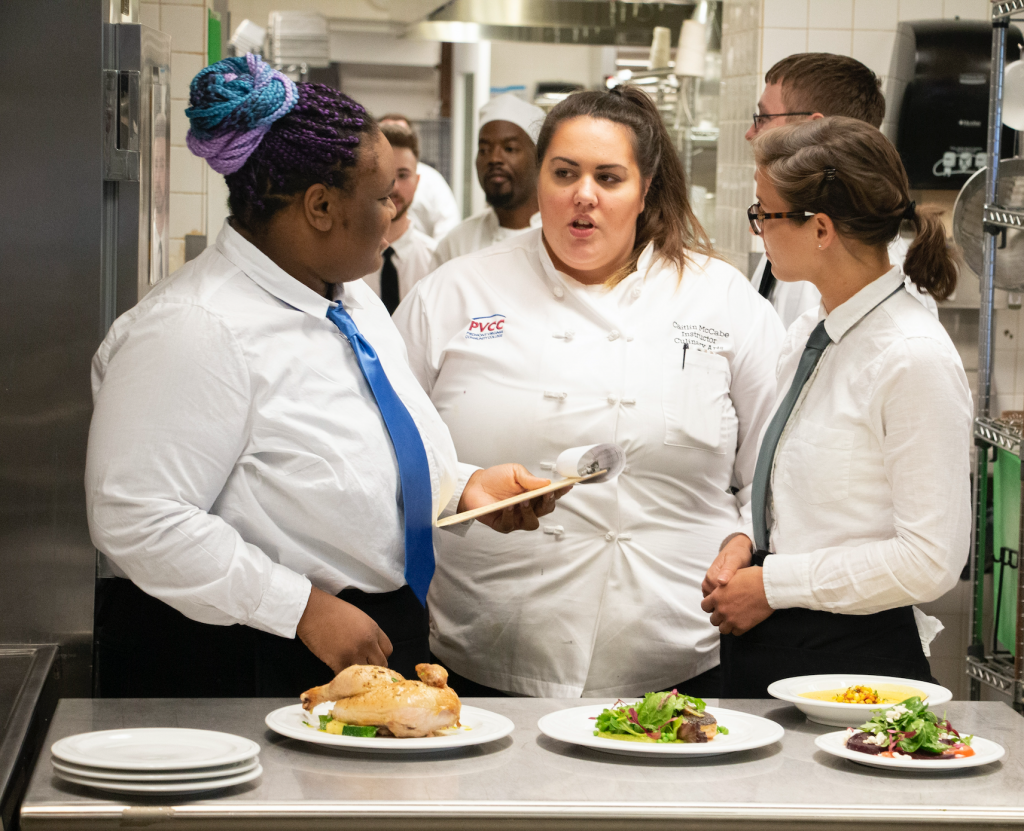
Ready to take your skills pro? Begin your professional training at Piedmont Virginia Community College, where you can get an associate’s degree in culinary arts, a culinary career studies certificate, or take a class if you’re looking to perfect a baking technique or learn to trim the whole cow.
“If you’re passionate about what you’re doing, we’ll help you get there,” says PVCC culinary arts instructor Caitlin McCabe. “Whether your goal is to open a restaurant or just get better at cooking.”
McCabe brought her degree in food service management to Virginia in pursuit of Southern hospitality, eventually becoming executive chef at The Palms in Lexington.
During their first year, students learn knife skills, the secrets of soups and stocks, and even the philosophical side of a bloody mary before noon. “We’ll break down why brunch is what it is,” says McCabe. “Aside from being fabulous.”
Along with these skills, students learn how to prepare and purchase meat and seafood to cook for a cozy, intimate gathering or a bustling chophouse that feeds hundreds. They’ll gain an understanding of mixology and have the opportunity to pursue classes like artisan bread-making—many of which McCabe is working on developing into one-day courses open to the public.
Year two of the associate’s degree includes understanding the culture of cooking. Where do international and regional cuisines come from? How does religion and historical expansion bring baguettes to South Asia or spices to England? Students will learn to collect twists of global staples and sprinkle them into a menu made for their kitchen.
McCabe emphasizes the program’s ability to accommodate any students looking to further their culinary journey. “We’re happy to be in the community, and look forward to expanding it.”—BJ Poss
“The best chefs all understand the professional kitchen from the ground up. For all cooks—casual and professional alike—the unrelenting desire to understand how a dish you love was made, assessing how it could be improved upon, and then figuring out how to do it yourself (with said improvements) is when you know you’ve officially embraced the concept of learning to cook, which is a never-ending process and constant evolution.”
Executive Chef Chuck Adcock, Rooftop Charlottesville
at The Doyle Hotel
Claiming terroir
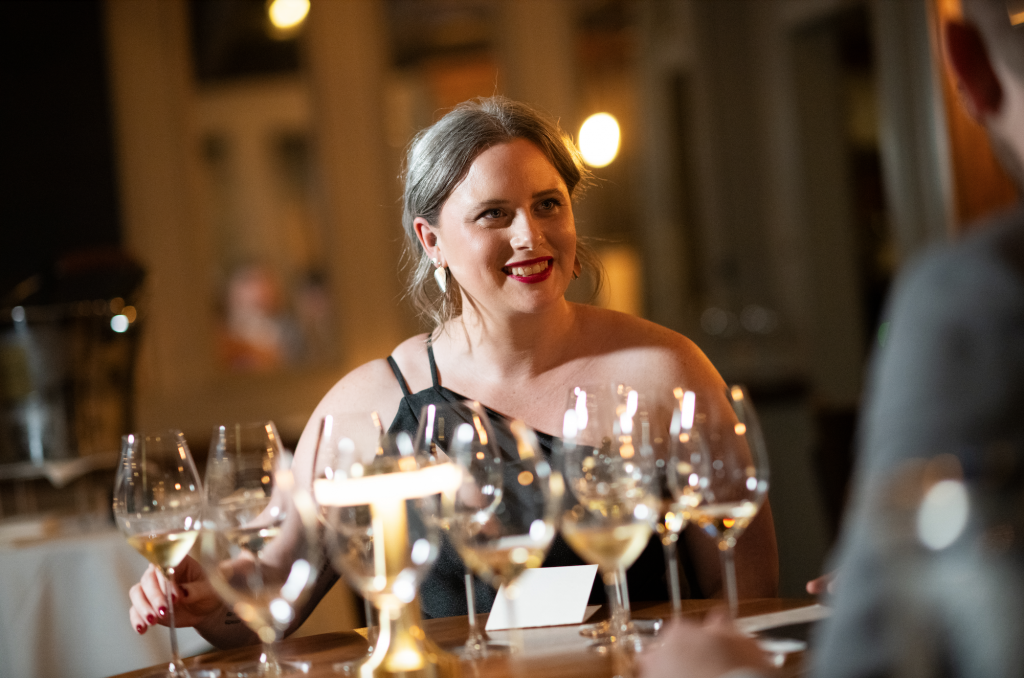
Anna Kietzerow is one of those people who looks perfectly at home swirling a glass of wine. Fingers cradling the stem, wrist twirling, champagne rising masterfully close to the rim, Kietzerow takes a sip of vintage Alexandre Bonnet Brut Nature, remarking on how much drier and crisper it is compared to the creamier Drappier Brut we tried moments ago. If brut and vintage already feel like a foreign language, or if you’re right at home in the world of oenology, then Kietzerow is precisely who you need to meet.
A philosophy Ph.D. candidate at UVA with a passion for wine, Kietzerow co-founded Cellar Road in 2023 with her “partner in wine” Adam Wagner as a space to explore and share their knowledge with others. Last year, the duo led an educational trip to Champagne, France, immersing guests in exclusive tours of champagne houses and Michelin-starred dinners. If this sounds like your scene, stay tuned: Their next tour will explore Germany’s Moselle Valley—the region where Kietzerow first cut her teeth, or rather her taste buds, on wine.
“How I approach wine has been heavily influenced by my background in philosophy,” explains Kietzerow, who sees wine as a sensory portal to the philosophical ideas about which she’s already passionate. “My dissertation is about the topic of place, and what it means for something to be a place, and the role that place plays in our social and political lives.” If your mind jumps to terroir, you’re on the right track.
For Kietzerow, terroir goes beyond the soil, climate, and terrain of a region; it includes the winemaker’s hand and cultural essence of a place. Her next class will dive into wines of Tuscany—chianti, brunello, and the complex Super Tuscans. While chianti and brunello are made exclusively with sangiovese grapes, Super Tuscans blend sangiovese with French varietals like merlot, cabernet sauvignon, cabernet franc, and syrah. Grown in Tuscan soil, these French grapes create a layered terroir, a “gray area” where Kietzerow thrives.
During our conversation, she introduced the sorites paradox, a classic philosophical problem that tackles vagueness. “Imagine I place a single grain of sand before you,” she says. “Is it a heap?” Of course not, but then she adds another. “Is it a heap now?” She’s onto something. When do individual grains of sand become a heap? When does sauvignon blanc from Sancerre differ meaningfully from one grown in the neighboring Loire Valley village of Pouilly-Fumé?
These are the kinds of questions Kietzerow explores as she works toward her Wine and Spirits Education Trust diploma, a challenging credential equivalent to master sommelier. When not at a UVA library, Kietzerow can be found studying at The Wine Guild of Charlottesville, tasting wines, writing descriptions, searching for quality vintages to make accessible to the Charlottesville community. And if you miss her classes or the upcoming Moselle trip, you can join Kietzerow and Wagner on Cellar Road’s podcast, which launches this month. Look out for her masterclass episode with Edouard Cossy, global director at Champagne Laurent-Perrier. It reflects on an in-depth tasting and paired dinner at The Alley Light—a rare chance to learn about champagne from someone who doesn’t just swirl the glass, but opens up the story within.—Sarah Golibart Gorman
“Don’t be afraid to make mistakes. Every time I’ve screwed something up, it’s sent me down the path to learning why I goofed, and those lessons prove invaluable as you continue cooking.”
Executive Chef Chris Humphrey, Bonny & Read
Pour your heart into Mudhouse’s coffee classes
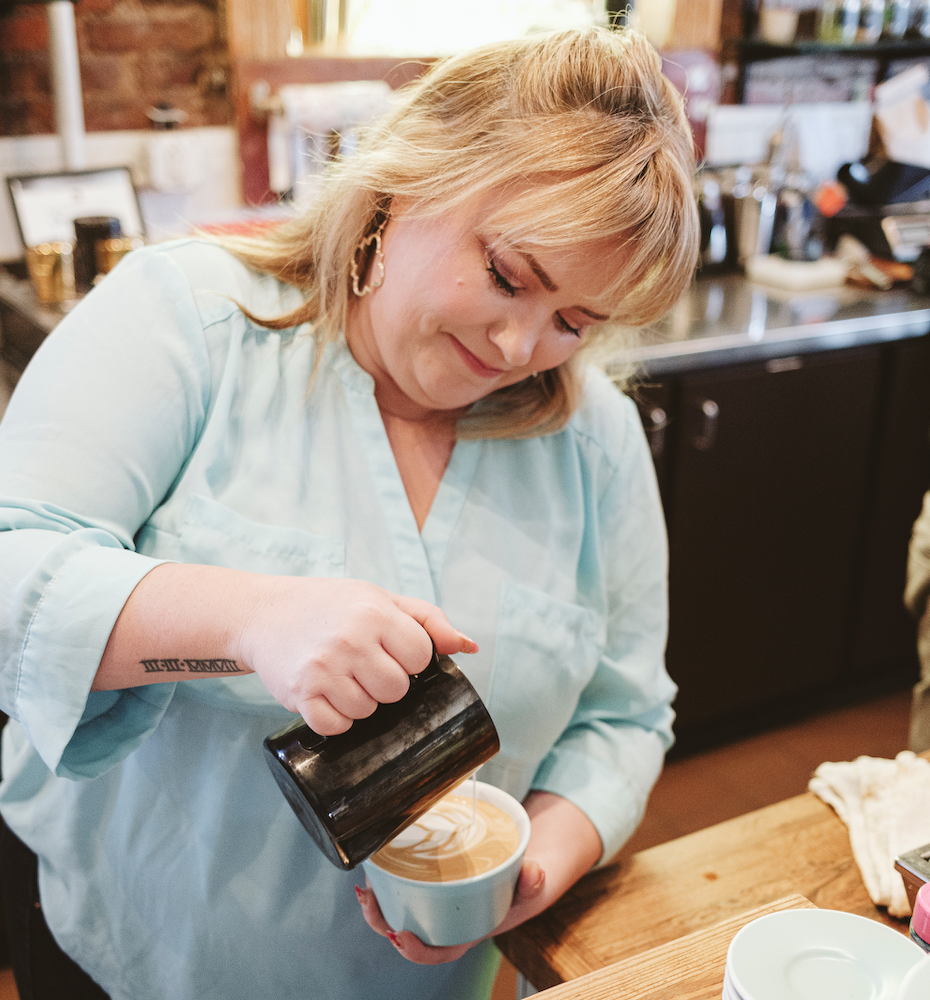
The Mudhouse has been grinding beans from its local roasters since 2009. In fall 2023, the shop began offering classes, giving customers the chance to learn the art and science behind a perfect cup of joe.
Certified as Q graders by the Coffee Quality Institute, Mudhouse professionals are trained in the sensory evaluation of coffee.
“We want typical everyday drinkers to be able to come in and learn something if they’re interested,” says Lindsey Simpkins, Mudhouse’s sales and events manager.
Coffee curious students are taught a range of skills that include triangulation (mini cuppings or tastings), explorations of coffee and sound, how to work specialty equipment, and how to create latte art.
Simpkins says the latte art classes have been the most popular among the public. Not only do they offer a unique date opportunity on the first Friday of each month, the classes also introduce the basic concepts and processes that uphold the Mudhouse standard.
“When [baristas] first come in, they have to learn the difference of the fat content in milk,” says Simpkins. The higher the fat content, Simpkins notes, the more air you want to introduce into your milk while steaming.
Listening to your latte is equally important. Simpkins points out that the sounds accompanying the production of your morning pick-me-up reveal whether the blend is up to par.
“Once it’s steaming, it should sound quiet, almost like a roller coaster going up a hill,” she says. “That’s how I teach people to envision it. If it’s screaming at you, then you didn’t introduce enough air.”
In the cupping class, Mudhouse’s diverse international coffee blends are concentrated in a process of setting ground beans with hot water until they rise and form a crust that is broken for an exquisite tasting experience. This allows students to distinguish the fine details of blends originating from regions such as Ethiopia or Colombia.
“You’re able to tell where coffee comes from based on the flavor profile and acidity level,” says Simpkins. Ethiopian blends, for instance, are normally accompanied by a fruity and floral flavor with a bright acidity, while the Colombian blends are notably chocolaty and sweet. “Once you get to a more elevated level, you’re actually scoring coffee.” Aroma and acidity are broken down to explore the complexities of different coffee blends, and participants are trained to notice all of the subtleties in preparing a grade A cup of coffee.
“We have also considered the fact that some of this isn’t as simple as learning it in a 30- to 45-minute class,” says Simpkins. “So come spring of 2025, [Mudhouse] will be opening up the roaster for private classes.”
The new classes will be conducted one-on-one with professional Mudhouse roasters, and Simpkins says the expanded programming gives participants an opportunity to become true coffee connoisseurs. “I just want people who want to learn and be involved in specialty coffee to know that they have a safe place to learn. We’re going to give you all the information you need so that you can go home and be able to do what we do every day,” Simpkins says. “Hopefully other coffee shops will join suit, and if not we’ll still be here growing.”—Ella Powell
